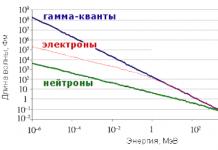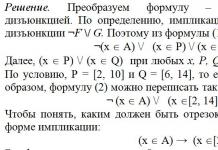Personnel management of a modern organization Stanislav Vladimirovich Shekshnya
5.2. Professional staff training
The most important means of professional development of personnel is professional education - the process of directly transferring new professional skills or knowledge to employees of an organization. Examples of professional training include courses on learning a new computer program for secretaries-assistants, a program for training sales agents, a financial course for the top management of a company. Formally, professional development is broader than vocational training and often includes the latter, but in real life the difference between them can be purely conditional and not so important, since both vocational training and development serve the same purpose - preparing the organization's personnel for successful implementation standing before him tasks. It is sometimes argued that professional training is focused primarily on the tasks of today, and development on the future needs of the organization. However, with the acceleration of changes in the external environment and in organizations themselves, this distinction is becoming increasingly arbitrary.
In modern organizations, professional training is a complex continuous process that includes several stages (see Fig. 23). Managing this vocational learning process begins with identifying needs, which are formed on the basis of the development needs of the organization’s personnel, as well as the need for the organization’s employees to fulfill their current production responsibilities.
Rice. 23. Vocational training process
Fulfillment of job duties requires employees of the organization to have knowledge of work procedures and methods of products produced and services provided, the ability to work on installed equipment, etc. The needs associated with the performance of production duties are determined on the basis of requests from department heads and employees themselves (see Fig. 24), by conducting surveys of managers and specialists (the vocational training department sends out a questionnaire asking them to indicate their needs for vocational training), analyzing the results of the organization’s work, and testing employees.
Application for vocational training for 2002
F., I., O. employee: Position:
Department: F., I., O. Head:
1. Training on
Required level
Duration of training
2. Training on
(Describe your professional training needs in as much detail as possible. For example, if we are talking about computer training, check “Excel”, “Windows”, etc.)
Required level
Duration of training
3. Training on
(Describe your professional training needs in as much detail as possible. For example, if we are talking about computer training, check “Lotus”, “Windows”, etc.)
Required level
Duration of training
Employee signature: Supervisor approval:
Rice. 24. Application form for vocational training
An elevator maintenance company conducted an analysis of elevator malfunctions and, based on this analysis, prepared 8 training programs for mechanics to eliminate the 6 most common causes of elevator malfunctions.
Another source of information about professional training needs is individual development plans prepared by employees at the time of certification (see chapter 7), and also applications and wishes of the employees themselves, sent directly to the professional training department.
The company's development strategy, recorded in special documents and speeches of its senior managers, is also an important source of information about the needs for professional training. The task of specialists is often to translate fairly general provisions of organizational strategy into the language of professional training.
The St. Petersburg branch of an American multinational company prepared a vocational training plan, the cost of which was estimated at $155,000. However, management approved a job training budget of $80,000. The plan was revised: programs were cut. for learning English, computer literacy, driving courses. The training programs for sales and purchasing specialists remained unchanged.
vocational training budget. Vocational training is associated with significant material costs, so the formation and control of budget execution are the most important elements of vocational training management. Two factors influence the size of the budget - the company's training needs and its financial condition. Senior management determines how much can be spent on job training over the next year and, by matching the budget size with identified needs, sets training priorities.
When calculating the vocational training budget, all cost components must be taken into account. Often organizations calculate only direct costs - compensation for invited instructors, costs of renting training facilities, purchasing materials and equipment, etc., and try to reduce them by using company employees as instructors or conducting training in their own premises, ignoring other types of costs associated with the absence of employees from the workplace, expenses for their business trips, meals, etc. Only the availability of complete information about the costs associated with professional training makes it possible to make the optimal decision on the method of conducting training (See Appendix: Vocational Training Statistics).
determining the goals of professional training and criteria for assessing its effectiveness. Based on the analysis of identified needs, the human resources department needs to formulate the objectives of each training program. The objectives of vocational training should be:
Specific and specific;
Oriented towards obtaining practical skills;
Evaluable (measurable).
When defining goals, it is necessary to remember the fundamental difference between vocational training and education: the first - develops specific skills and abilities needed by a given organization, the second - is aimed at the general development of the student in a certain field of knowledge.
The purpose of the Automotive Dealer Sales Agent Training Course is to develop the skills to sell specific vehicle models in a specific geographic area. The goal of the Master's program in Marketing and Sales is to develop graduates' knowledge base in this area of organizational management.
Assessing the effectiveness of training programs is the most important aspect of managing professional training in a modern company. Increasingly, the cost of professional training is seen as an investment in the development of the organization's personnel. These investments should bring a return in the form of increased efficiency of the organization (more complete realization of its goals). Thus, many economic organizations expect additional profit from vocational training. Corporation X considers a 10% return on capital invested to be desirable. After spending $100,000 on professional training, the corporation expects to earn an additional profit of at least $10,000 (10% of the investment).
It is quite difficult to assess the effectiveness of each individual program in this way, since it is not always possible to determine its impact on the final results of the entire organization. In this case, effectiveness can be assessed by the degree to which the program's goals are achieved. In the example above, the elevator maintenance organization created special programs to eliminate and prevent the root causes of elevator malfunctions. The effectiveness of this training can be assessed by how much the number of failures for these reasons has been reduced, as well as the time and costs to eliminate them.
Some training programs are created not to develop specific professional skills, but to develop a certain type of thinking and behavior (typical for programs aimed at the professional development of personnel, for example, young employees of an organization). The effectiveness of such a program is quite difficult to measure directly, since its results are designed for a long period and are associated with the behavior and consciousness of people that cannot be accurately assessed. In such cases, you can use indirect methods:
Tests conducted before and after training and showing how much the students’ knowledge has increased;
Observing the behavior of trained employees in the workplace;
Monitoring the reactions of students during the program;
Evaluating the effectiveness of the program by the students themselves using a survey or during an open discussion.
In any case, assessment criteria must be established before training and brought to the attention of students, trainers and managers of the professional learning process in the organization. After completion of the training and its evaluation, the results are reported to the human resources department, the managers of the trained employees and the employees themselves, and are also used in further planning of professional training. It is very useful to re-evaluate the effectiveness of training by analyzing changes in the performance of employees who completed it after a certain period of time (six months or a year), which makes it possible to assess the long-term effect of the program.
development and implementation of vocational training programs. With training needs identified, a budget in place, performance evaluation criteria in place, and familiarity with various training methods, the organization's training department can begin preparing the programs themselves. Developing a program involves defining it content and choice methods of vocational training. The content of the program is determined primarily by its goals, which reflect the professional training needs of a particular organization. A marketing training program for executives of an engineering company will be different in many ways from a course of the same name for executives of a pharmaceutical company. When determining the content of the program, it is also necessary to take into account the characteristics of potential students. Obviously, a course on intra-organizational communication for senior managers should be different from a similar course for commercial agents.
When choosing teaching methods (see paragraph 5.2) The organization must first of all be guided by the effectiveness of their impact on a specific group of students. It is necessary to take into account principles of adult learning. There are four such principles:
1. relevance. What is said during training must be relevant to the professional or private life of the student. Adults do not perceive abstract and abstract topics well;
2. participation. Students must actively participate in the learning process and directly use new knowledge and skills during the course of their studies;
3. repetition. It helps new things stick in memory and turns acquired skills into a habit;
4. feedback. Learners need to be constantly provided with information about how much progress they have made. Having this information allows them to adjust their behavior to achieve better results.
The most common form of feedback is teacher-assigned grades. However, you should be extremely careful: grades that do not meet expectations can have a demotivating effect on students. More effective forms of feedback may be such as summing up the results of a competition between participants, determining the percentage of task completion, etc. In feedback, adults value not so much an absolute assessment as the opportunity to make suggestions for improvement, “to be heard.”
Research shows that the success of a vocational training program depends 80% on its preparation and 20% on the desire and ability of the students. Training will be equally ineffective if it is treated as a “paid vacation” or as a “punishment.” Therefore, the human resources department should pay special attention to creating an appropriate attitude towards the planned training. The following factors can motivate employees to actively participate in a job training program:
Desire to get promoted or take another position;
Interest in increasing wages;
Interest in the process of acquiring new knowledge and skills;
Desire to establish contacts with other program participants.
Understanding how vocational training might interest an employee allows you to present information about the upcoming program accordingly. In this case, the decisive role should be played by the head of the department in which the employee sent for training works. As a rule, the manager understands his motivation better than others and has the ability to link the employee’s interests with the upcoming course.
It is also important to determine the employee's ability to participate in a particular vocational training course, i.e., the degree of his preparedness. Indirect indicators of this are the level of education, professional experience, and certification results. Quite often, pre-testing of candidates for participation in a training course is used. The presence of even one insufficiently (or overly) prepared participant in the group can significantly reduce the effectiveness of the entire course.
Training experts have long understood that there is no one universal teaching method - each has its own advantages and disadvantages. Therefore, most modern vocational training programs are a combination of various delivery methods - lectures, videos, business games, simulations, etc. Training department staff must have a good understanding of the strengths and weaknesses of each method and design programs with this in mind. The five-day program “Finance for Non-Financial Executives” of a transnational American corporation includes overview lectures (50% of the time), individual assignments and their analysis with an instructor (20%), and a group business game (30%). The same company's three-day occupational safety program consists of videos (10%), instructor lectures (10%), individual assignments (20%), group exercises (20%), and business games (40%).
Programs may be developed and implemented by the organization itself, or it may use external consultants. As noted above, today many large corporations have powerful educational structures, but they are also the most important consumers of vocational training services. The choice of training organization method depends on factors such as the availability of necessary resources (trainers, materials, premises) within the organization, the level of training of instructors, etc. As in any case, when an organization must make a decision like “produce or purchase externally” , the decisive factor is cost-benefits analysis.
The Russian branch of a multinational company received a directive from World Headquarters to train all managers in personnel selection interview techniques within a year. According to the calculations of the human resources department, the training should have covered about 200 people. Management considered the following options: training on the basis of a foreign consulting company (a proven standard program that can be adjusted at the request of the customer, duration of training 2 days, cost $500 per participant), training on the basis of a local business school (specially developed new program, training duration is 2 days, cost is $200 per participant) and training within the organization (a special newly developed program of indefinite duration, lack of experienced instructors). Alternatives were considered in terms of program content, instructor qualifications, and cost. As a result, the decision was made to train fifteen employees with the help of a consulting company and use them as trainers for subsequent management training in the same program.
From the book Management: lecture notes author Dorofeeva L I6. Formation of an effective workforce. Personnel training and development. Career management An important stage of HR management is personnel development, which includes professional orientation and adaptation in the team, as well as training and retraining of personnel. When
From the book Basics of Small Business Management in the Hairdressing Industry author Mysin Alexander Anatolievich From the book Human Resource Management author Shevchuk Denis Alexandrovich8.7. Personnel training The importance of continuous education is confirmed by the following main factors: the introduction of new equipment, technology, the production of modern goods, the growth of communication capabilities create conditions for the elimination or change of some types of
From the book Personnel Management of a Modern Organization author Shekshnya Stanislav VladimirovichChapter 5. PROFESSIONAL DEVELOPMENT OF PERSONNEL Professional development of employees is becoming the most important factor distinguishing successful companies from less successful ones. J. Walker The objectives of the chapter are to describe the role of professional development of personnel in management
From the book Retail Store: where to start, how to succeed author Bocharova Anna AlexandrovnaPersonnel training: why teach, what to teach and who to entrust Correct selection of personnel according to professional qualifications and personal characteristics significantly reduces staff turnover. But, as I wrote earlier, the staff turnover rate in the retail business
From the book Coffee House: where to start, how to succeed. Advice for owners and managers author Ulanov Andrey Nikolaevich From the book HR Engineering author Kondratyev Vyacheslav Vladimirovich4.11. Personnel training Not all companies can boast of an effective corporate training system. In practice, you can encounter the following:1. Disadvantages of management control and analysis. It is difficult to exercise operational management control. Absent
From the book A Guide to Job Search, Self-Presentation and Career Development author Rumyantseva Ekaterina VadimovnaChapter 4: Career Development and Training Many people believe that one of the best ways to increase their value in the job market is through training. Let's first discuss what types and forms of professional retraining of specialists exist.
From the book Beauty Salon: from business plan to real income author Voronin Sergey ValentinovichTraining of beauty salon personnel Improving the qualifications of one or another employee should become a rule for a beauty salon. This must be done because fashion does not stand still, and competitors are not asleep. This issue is becoming increasingly relevant due to
From the book Job Description of a Manager, or “Managerial Eight” author Kuvshinov Dmitry2.11. Personnel training Trained personnel are an indicator of a successful organization. Trained employees do their work much faster, make fewer mistakes, and achieve better quality. Not all training must be carried out by the immediate supervisor (he may
From the book The Practice of Human Resource Management author Armstrong Michael From the book Business Process Management. A practical guide to successful project implementation by Jeston John From the book Sales Department Management author Petrov Konstantin NikolaevichIntroduction
3. Vocational training methods
4. Features of training for organizational leaders
4.1 In-house training as a technology for developing the organization’s human resources potential
4.2 In-house training as a process of continuous education and its features
5. Training costs and determining the effectiveness of training
Conclusion
Personnel training for most Russian organizations is currently acquiring special importance. This is due to the fact that working in market conditions places high demands on the level of personnel qualifications. Both external and internal conditions of the organization's functioning are changing rapidly, which confronts organizations with the need to prepare personnel for changes. Therefore, personnel training is not an end in itself for the organization; it must be related to the processes of organizational development.
The most important means of professional development of personnel is professional training - the process of directly transferring new professional skills or knowledge to employees of the organization.
Vocational training is the process of developing specific professional skills among employees of an organization through special teaching methods.
Examples of professional training include courses on learning a new computer program for secretaries-assistants, a program for training sales agents, a financial course for the top management of a company.
1. Determine training needs
In modern conditions of rapid obsolescence of professional skills, the ability of an organization to constantly improve the qualifications of its employees is one of the most important success factors. Professional development management has emerged over the past two decades as a key element of managing a modern organization. The forms of professional development are: career planning and development, training of a reserve of managers, vocational training.
The professional learning cycle begins with needs identification, which consists of identifying gaps between the required and existing competencies of employees and the organization. Because training costs are viewed as an investment in employee skills, the organization expects a return in the form of improved performance and measures its effectiveness accordingly. The development and implementation of vocational training programs can be carried out by the organization itself. Similarly, by specialized companies, in each specific situation the choice is determined by an analysis of the advantages and disadvantages of each option. The choice of specific training methods is determined by the goals of the program, the characteristics of the students and the resources at the disposal of the organization.
In modern organizations, professional training is a complex continuous process that includes several stages. Managing this process of professional training begins with identifying the needs, which are formed on the basis of the development needs of the organization's personnel, as well as the need for the organization's employees to fulfill their current work responsibilities.
Fulfillment of job duties requires employees of the organization to have knowledge of operating procedures and methods of manufactured products and services provided, the ability to work on installed equipment, etc. The needs associated with the performance of production duties are determined on the basis of requests from department heads and employees themselves, by conducting surveys of managers and specialists (the vocational training department sends out a questionnaire with a request to indicate the needs for vocational training), analysis of the results of the organization’s work, testing of employees.
Another source of information about professional training needs is individual development plans prepared by employees at the time of certification, as well as requests and wishes of the employees themselves, sent directly to the professional training department. The company's development strategy, recorded in special documents and speeches of its senior managers, is also an important source of information about the needs for professional training. The task of specialists is often to translate fairly general provisions of organizational strategy into the language of professional training.
To meet the need for personnel, especially in a situation of closed personnel policy, it is important to promote existing personnel - which creates a completely special, patriotic attitude towards the organization.
Career planning and personnel training procedures help both the organization and personnel to predict the satisfaction of both organizational and individual goals of professional and job growth. In order to determine the need for training, it is advisable to use the results of labor and personnel assessments, analyze the strategic transformation plan, evaluate the success of the training programs that students of relevant educational institutions undergo, and diagnose the level of preparedness of new employees.
2. Goals and directions of training
Based on a preliminary task analysis, it is necessary to identify specific functions or work process elements that require improvement or development. What you hope to achieve through training should be captured in clearly stated learning objectives. Moreover, these goals must be clearly and clearly formulated, since only in this case it is possible to assess whether the training will be effective.
Learning objectives form the basis for creating a detailed curriculum, the very content of which depends on the number and type of learning objectives. At the same time, one should not forget about the personal characteristics of the employee who is supposed to be trained.
The purpose of professional training is to prepare the organization’s personnel to successfully perform the tasks facing them.
The goals of training from the point of view of the employer and the specialist themselves are significantly different.
Employer's point of view. German specialists W. Bartz and H. Schaible believe that from the employer’s perspective, the goals of lifelong learning are:
Organization and formation of management personnel;
Mastering the ability to identify, understand and solve problems;
Personnel reproduction;
Personnel integration;
Flexible personnel formation;
Adaptation;
Introduction of innovations.
The employee's point of view. Bartz and Schaible define the following goals of continuing education:
Maintaining at an appropriate level and improving professional qualifications;
Acquisition of professional knowledge outside the scope of professional activity;
Acquiring professional knowledge about suppliers and consumers of products, banks and other organizations influencing the work of the company;
Development of abilities in the field of production planning and organization.
The motivation for lifelong learning in American companies is the connection between the performance results of each employee and providing him with training opportunities: the value of a company employee determines the amount of funds allocated to improve his skills.
Training an already established professional working in an organization is important, first of all, for the organization itself. For successful operation, it is necessary for management to carry out activities in two main directions - external adaptation and internal integration:
From the point of view of directions in training, five main situations can be distinguished.
Table 1
Basic situations from the point of view of directions in training
| Situation | Specification of training needs | Teaching Method |
| 1. | Specialized training programs (sales training, negotiations, creativity) | Behavioral training methods |
| 2. | Team building programs | Active group and intergroup activities followed by reflection of the group process. Business and role-playing games, analysis of organizational problems |
| 3. | Development of interpersonal and intra-company communication, formation of conflict resolution skills | Sensitivity training, role-playing games, business simulation games, internships, corporate culture design |
| 4. | Management training | Lectures, seminars, practical classes, educational business games |
| 5. | Preparing for Organizational Innovation | Organizational thinking games, project development, analysis of organizational situations |
training manager potential efficiency
Vocational training methods
There are a huge number of methods for developing professional knowledge and skills. All of them can be divided into two large groups - on-the-job training and off-the-job training. The main methods of on-the-job training are: coaching, rotation, apprenticeship and mentoring.
MINISTRY OF AGRICULTURE OF THE RUSSIAN FEDERATION
FEDERAL STATE BUDGET EDUCATIONAL INSTITUTION OF HIGHER PROFESSIONAL EDUCATION
IZHEVSK STATE AGRICULTURAL ACADEMY
Faculty of Continuing Professional Education
Test
in the discipline: "Human Resource Management"
Checked by: Barbakova S.I.
Completed by: 2nd year student
Potorochina A.A.
(profile - "Organization Management", gr. 1, code 1106021)
Izhevsk 2013
Bibliography
First question. Professional training of employees at the enterprise. Coaching, mentoring, etc.
Professional training of employees is necessary in every company, regardless of its field of activity and form of ownership. Moreover, effective professional development of employees cannot be ensured formally by introducing standard, mandatory measures by order from above. Determining training needs, constant targeted training of employees, organizing interaction with HR and internal trainers are the responsibilities of each line manager.
Professional education- this is a process of purposeful formation of special knowledge among employees, the development of the required skills and abilities that allow increasing labor productivity, performing functional duties with the highest possible quality, and mastering new types of activities. The chosen areas of personnel training must first of all correspond to the strategic and operational goals of the company. Training programs should be drawn up on the basis of studying the quality of personnel and taking into account the tasks of both the long-term development of the company as a whole and its individual structural divisions.
Professional training of personnel is necessary in various situations:
· when hiring new employees (“young fighter course”);
· when transferring employees to other positions;
· when enrolling employees in the personnel reserve;
· when introducing new equipment and new technologies into the company;
· in order to increase the competitiveness of the company;
· to increase worker productivity;
· for employees to master new areas of activity.
When organizing effective professional training of personnel, it is necessary to consistently implement a number of tasks:
· identify training needs;
· select appropriate methods;
· to train;
· evaluate its effectiveness.
Identifying training needs
It is very important to understand what kind of training your employees need at the moment. To determine training needs and plan it correctly, technologies such as task analysis (tsk nlysis) And performance analysis (performnce nlysis).
It is necessary to analyze the tasks facing the employee in order to determine the required level of development of professional competencies and quality of performance, that is, to understand how it “should be.” When analyzing tasks, the job profile, job descriptions and work planning documents in the department are studied.
Performance analysis helps determine the real state of affairs, including identifying shortcomings, that is, understanding how “this actually happens.” When analyzing activities, the following methods can be used: observation, conversation with an employee, professional and psychological testing, questioning; conducting focus groups; assessment of professional activity or certification.
When analyzing execution, it is necessary to obtain answers to the following questions:
· Does the employee encounter problems performing their job?
· What indicates that problems exist?
· What causes the problems, and how does the employee react to them?
· What should an employee (group of employees) do to solve problems?
· What alternatives exist for solving problems?
· How effective are the existing methods of solving problems, and can they be optimized?
· Will the employee be able to do this?
· Will employee training help solve the problem?
The analysis of tasks and analysis of execution allow us to see the difference between the required and existing levels of development of professional competencies. This makes it possible to “target” determine the need for training.
The line manager of this department can most accurately identify the need for training of employees of a structural unit. At the same time, he must work closely with the HR manager.
The activities of a newbie, compared to experienced “old-timers,” need more control. In relation to him, the manager gives more orders than delegates authority to complete tasks. The longer an employee works in a company, the more he learns and, as a result, delegation becomes optimal (the process of “growing up” of an employee is depicted in Fig. 1).
Even if an employee has worked in the company for several years, you should still not forget about monitoring his activities. What then to control? As in all cases when we talk about business, there are, of course, quantitative indicators. Is it worth it to control the process of completing the task itself? And how exactly? The answer here is quite simple: you need to determine the degree of qualification (knowledge and skills) and the degree of motivation of the employee to complete the assigned tasks. Similar answers can be obtained during certification using methods such as “360”, personal interviews, case assignments, observation of employees’ work on the sales floor or in other fields, etc. Having these indicators, we can conclude: the higher the qualifications and internal motivation of the employee, the less control over the process of completing tasks and vice versa (Fig. 2).
The results of activities must always be monitored, otherwise it will not be a business at all, but a public organization. Thus, the goal of personnel management in any company is the comprehensive development of employees (ultimately increasing motivation and qualifications), reducing control over the work process and delegating responsibility for the timely and effective completion of tasks. This, in turn, allows the manager’s time and attention to be transferred to the implementation of strategic tasks.
Selection of teaching methods
Once training needs have been identified, it is necessary to clearly formulate vocational training goals: what exactly do we want to train our employees. Next, you need to choose the most effective methods of professional training. Let's look at the most common of them.
Training- group form of training (12-16 people). Mainly aimed at developing skills and mastering new work technologies. The average training duration is two to three days. The main methods used in its implementation: exercises, role-playing games, mini-lectures, work in small groups, brainstorming, case analysis (situational analysis), exchange of experience, etc.
Seminar- group training (up to 100 people participate). Mainly aimed at transferring new knowledge. Duration on average is from half a day to three. The main methods used during seminars: lectures and answers to questions.
Mentoring (coaching) - individual training on the job (directly in the process of performing functional duties). The duration of such training most often coincides with the duration of the probationary period. The mentor is appointed from among experienced and professionally successful employees, and may also be the immediate supervisor. An important nuance: to ensure the effectiveness of this form of training, the mentor must be well prepared and motivated.
Experienced managers often use mentoring and coaching in conjunction, while not clearly distinguishing between the concepts themselves. However, it should be understood that coaching and mentoring are two different approaches to training and staff development, both from a methodological and practical point of view. So, for example, the use of mentoring for experienced employees “plays against the company,” i.e. does not bring any benefit, and sometimes even harms new achievements and results of employees.
Mentoring is the main tool when working with newcomers or trainees; the purpose of its use is to improve the skills of employees to the level accepted as the standard in the company. Essentially, it is the transfer of knowledge about how the store operates; what group of products is represented; what constitutes a disciplinary violation; what kind of attitude needs to be demonstrated to clients; what is included in the service standards, etc.
As a rule, mentors are employees who have the necessary experience in a particular organization. But in retail chains, it may be difficult to appoint an experienced salesperson as a mentor if this work is not taken into account in his individual payment system (in practice, the salesperson’s main income often depends directly on sales). That is, an employee will take on the responsibilities of a mentor in the case when he clearly understands: “if my trainee achieves good results by the end of the probationary period, I will receive such and such a bonus”; “if the successes are insignificant, but he continues to work in the company, a smaller bonus”; “If the company decides to part with the intern, but this is not related to the work of the mentor, I receive a minimum bonus.”
Mentoring- individual form of development and training. Can be carried out both in the workplace and outside it. The mentor, as it were, “patronizes” the mentee, gives his “protégé” advice and provides practical assistance. The meaning of the concept of “mentoring” is broader than that of “coaching”. When coaching, they concentrate on the development of skills or competencies, while mentoring is associated with the transfer of not only objective knowledge, but also individual methods of activity, subjective views, and personal attitudes to life (business). The immediate supervisor cannot act as a mentor; it can only be a representative of senior management or an external consultant.
Rotation- movement of employees from one workplace to another within one structural unit or within the entire company. Rotation allows you to solve several important problems simultaneously:
· stimulate the activities of employees by providing them with the opportunity for horizontal movement, promoting the growth of professionalism;
· ensure the interchangeability of employees in the department;
· improve the skills of employees.
When choosing a training method for your employees, you need to consider your goals and objectives, as well as the resources available.
Conducting training
Once training needs have been identified, its goals and objectives have been formulated, and methods have been determined, you can proceed to the next stage - the actual organization and conduct of employee training. Depending on the size of the company, the availability of resources and time constraints, training can be carried out either internally by the company (direct manager, experienced employee, HR manager, internal trainer, etc.), or with the involvement of external contractors - training and consulting companies or freelancers (independent trainers and consultants).
When organizing and conducting professional training, it is very important to be guided by the following basic principles:
· The topic of training should be directly related to the professional activities of the participants, be important and relevant to them.
· Employees need to actively participate in the learning process, and to do this they must be motivated to acquire new skills and knowledge.
· Information that is completely new to participants should be “reinforced” through repetition, practice in exercises, when preparing and conducting presentations, etc.
· Participants need to constantly provide feedback, for example, include professional competitions in the learning process, summarize results, make summaries at each individual stage of training, etc.
Research has shown that 60% of the effectiveness of training depends on proper preparation (identifying needs, clearly setting goals, choosing an up-to-date training program, attracting the right trainer or consultant); 20% - from the professionalism of the trainer and 20% - from the “involvement”, motivation and desire of the students themselves. Training cannot be effective if employees view it only as an opportunity to take their mind off work and have fun (especially if the training takes place outside); demonstrate your knowledge of the stated topic; sit in a corner or, on the contrary, attract attention to yourself. With such an attitude towards learning, a person will not only be unable to take advantage of new information, learn the material and practice skills, but will also distract his colleagues. The presence of such “vacationers” in a group can cause a “chain reaction” of shutdowns. In this case, there is no need to talk at all about the effectiveness of the training provided and, even more so, about the improvement of knowledge and skills (and, consequently, about the justification of investments). Therefore, a very important task of the line manager and HR manager is to form a positive attitude of employees towards the planned training, setting them up for productive activities.
Second question. Forms of employment of workers
The practical need for population accounting necessitates the identification of types (structure) of employment and distribution of the active part of labor resources by spheres and sectors of the economy.
There are also various forms of employment - organizational and legal methods, conditions of employment. Let us characterize individual forms of employment.
Based on the method of participation in social labor, employment can be divided into hired employment and self-employment.
Employment is a relationship that arises between the owners of the means of production and workers who do not have the means of production and sell their labor power in exchange for a certain value in the form of wages.
According to working hours, it is customary to distinguish full-time employment and part-time employment. Full-time employment is based on a regulated full-time work schedule, which is currently 40 hours per week.
According to the regularity of work activity, employment is divided into permanent, temporary, seasonal and casual. Permanent (regular) employment implies that the employee must work a certain number of hours every week, less often - every month; temporary employment has two types: employment for a certain period (fixed term of the employment contract) and travel employment (through the intermediary of certain companies); seasonal employment involves working during a certain season, and, finally, casual employment means performing short-term work of various types in order to receive material remuneration without concluding an employment contract.
Based on the legitimacy of employment, employment is divided into formal and informal. Formal employment is employment registered in the formal economy. Informal employment is employment that is not registered in the official economy, and whose source of jobs is the informal sector of the economy and its individual types.
According to the conditions of the organization of labor processes, employment is divided into standard and non-standard. This division is based on the specifics of the organization of the labor process, which takes various forms. Standard (typical) employment is employment that involves the permanent work of an employee for one employer in his production premises at a standard workload during the day, week, or year. Non-standard (flexible) employment goes beyond this framework and includes the following forms:
employment associated with non-standard working hours, such as a flexible working year, compressed working week, flexible working hours, etc.;
employment related to the social status of workers: independent workers with family members helping them;
employment in jobs with non-standard jobs and labor organization: home work, “on-call workers,” rotational and expeditionary employment;
employment in non-standard organizational forms: temporary workers, part-time work.
Employment is the activity of citizens related to the satisfaction of personal and social needs, which does not contradict the legislation of the Russian Federation and, as a rule, brings them earnings, labor income.
In accordance with the Employment Law, three signs of employment can be distinguished:) the presence of labor and socially useful activities;
b) the legality of this activity;
c) as a rule, the presence of income, although there may not be income, for example, for a university student studying full-time. Citizens have the exclusive right to dispose of their abilities for productive, creative work, therefore employment can be expressed in various types of activities.
Types of employment show where a citizen is employed, that is, they indicate the form of application of citizens’ labor.
According to the employment law, the following citizens are considered employed:
1) those working under an employment contract, including those performing work for remuneration on a full-time or part-time basis, as well as those having other paid work (service), including seasonal and temporary work, with the exception of public works;
) engaged in entrepreneurial activities, registered as an individual entrepreneur;
) those employed in auxiliary industries and selling products under contracts;
) performing work under civil law contracts, the subject of which is the performance of work and provision of services, including under contracts concluded with individual entrepreneurs, as well as work under copyright contracts;
) who are members of production cooperatives (artels);
) elected, appointed or approved for a paid position;
) undergoing military service, alternative civilian service, as well as service in internal affairs bodies, institutions and bodies of the criminal correctional system;
) undergoing full-time courses in general education institutions, institutions of primary vocational, secondary vocational and higher vocational education and other educational institutions, including training in the direction of the federal state employment service;
) temporarily absent from the workplace due to disability, vacation, retraining, advanced training, suspension of production caused by a strike, conscription for military training, involvement in activities related to preparation for military service, alternative civil service, performance of other government duties or other good reasons;
) who are founders (participants) of organizations, with the exception of founders (participants) of public and religious organizations (associations), charitable and other foundations, associations of legal entities (associations and unions), which do not have property rights in relation to these organizations.
Based on this, it can be distinguished two kinds employment:
) employment as work activity;
) employment as a socially useful activity.
Labor activity refers to work under an employment contract, under a civil law contract, activity under copyright contracts, this can also include entrepreneurial activity, service in the internal affairs bodies and in the armed forces. Socially useful activities, both income-generating and non-income-generating, include training in general education and vocational educational institutions; child care while women are on maternity leave; a period of absence from work due to conscription for military training or involvement in activities related to preparation for military service.
The employment security form shows by what means the state employment service helps an unemployed citizen acquire the status of an employed person.
The main forms of employment are:
1. Information about the labor market, that is, the employment service provides each unemployed person with information about the possibility of employment in his or her specialty, and about the dynamics of the labor market.
Free search for a suitable job.
Providing opportunities for advanced training, retraining or acquiring a new profession.
Employment while away, that is, the provision of a workplace in another locality with compensation for moving expenses, which contributes to the territorial redistribution of labor.
Youth practice, that is, employment of graduates of vocational educational institutions who cannot find work with partial coverage of the employer’s wage costs through special funds.
Conducting job fairs to provide temporary employment for teenagers.
Involvement in community service.
Job quotas, that is, the establishment of a norm for the mandatory hiring of citizens in need of increased social protection, for example, people with disabilities. Quotas make it possible to provide employment to socially vulnerable categories of citizens. A quota is a minimum number of jobs, established as a percentage of the average number of employees of organizations and institutions, for the employment of certain categories of citizens who are especially in need of social protection and have difficulty finding work, whom the employer is obliged to employ in this organization, including the number of workers places where citizens of the specified category are already working.
vocational training staff employment
9. Support for entrepreneurship and self-employment of citizens - employment service authorities provide the opportunity to gain knowledge about the basics of entrepreneurial activity.
Job support, that is, the employer can enter into an agreement with the employment service that it does not make mass layoffs during a certain period of time, and the state, on a refundable or non-refundable basis, provides benefits to employees on forced leave without pay at the expense of state funds. employment fund. This form stimulates hidden unemployment and is negative.
Depending on the content of the main directions of state policy in the field of employment, two types can be distinguished:
) active state policy in the field of employment;
) passive state policy in the field of employment.
An active policy is characterized by the presence of forms of employment provision aimed at quickly finding work, as well as retraining and vocational training of the unemployed, that is, the state establishes additional incentives for those who are trying to get a job.
Bibliography
1.Labor market: textbook, ed. Prof. V.S. Bulanova and prof. ON THE. Volgina. - M.: "Exam", 2000.
2.Adamchuk V.V., Tomashov O.V., Sorokina M.E. Economics and sociology of labor. M.: Binom - Press, 2005
3.Socio-economic statistics: textbook for universities, under. ed. B.I. Bashkatova 2002
4.
Tutoring
Need help studying a topic?
Our specialists will advise or provide tutoring services on topics that interest you.
Submit your application indicating the topic right now to find out about the possibility of obtaining a consultation.
Vera Konovalchik
The article examines the place of the personnel training system in the development of enterprise personnel in the context of economic changes in the country. A scheme for constructing a personnel training system is proposed and the results of its implementation based on the research are described. The feasibility of its use is substantiated and proposals for assessing the effectiveness of personnel training are presented.
The article examines the place of training system in personnel development in terms of economic changes in the country. There is offered a sheme of a training system construction. As well as we consider its use on the base of a special enterprise. The article proves advisability of this scheme use and presents offers regarding estimation of personnel training system efficiency.
Keywords: personnel development, personnel training, types and forms of personnel training, business process of personnel training, training effectiveness.
The research base is a management company (association of industrial enterprises), Donetsk, Ukraine.
In a situation of acute shortage of working capital in many enterprises, it is human capital that becomes its main competitive advantage. Against the backdrop of an economic crisis, the “quality” characteristics of personnel become especially important, since it is highly qualified workers with creative thinking who can find a way out of non-standard situations that arise due to the recession of the global economy. The main factor that directly affects the quality characteristics of personnel and the cost of human capital of the enterprise as a whole is the personnel development system. This system is a key component of personnel management as a whole and helps strengthen the competitive advantages of the enterprise in the market. The goal of personnel development is the formation and maintenance of human resources, improving the professional skills of workers, developing in them modern economic thinking, the ability to work in a team, ensuring on this basis high labor productivity and the effective functioning of the enterprise as a whole.
At our enterprise, with the deterioration of the situation in the country, the question arose about building a personnel development system, since before that most of the areas of personnel development were carried out haphazardly: training, assessment and even career planning were carried out sporadically for specific employees. However, with the reduction in opportunities for financing development, the effectiveness of these activities came to the fore, but turned out to be impossible without a clear “outline” of business processes and the construction of an integrated personnel development system.
When studying the issue of enterprise personnel development in a variety of modern sources of information, you can get confused. Authors and even management schools assign different meanings to this word and imply an ambiguous list of subsystems included in the personnel development system. Based on a generalization of theoretical studies by domestic and foreign researchers, the experience of leading experts in the field of personnel development and business processes of our enterprise, the relationship between personnel development and other areas of work with personnel was presented (as shown in Fig. 1).

The personnel development strategy is based on the enterprise development strategy. Based on this, strategic management of personnel development is carried out by the head of the enterprise, and the head of the personnel management service is responsible for the development of policies and tactics for personnel development, as well as for their implementation. When researching this issue, you can come across quite a lot of meanings that are put into the term “personnel development”. In order to eliminate ambiguity, personnel development will be understood here as a set of activities covering the following issues:
- professional adaptation;
- assessment of candidates for a vacant position;
- ongoing periodic personnel assessment;
- internal certification;
- business career planning and professional advancement;
- work with personnel reserve;
- issues of organizing inventive and rationalization activities at an enterprise.
Each of these areas deserves detailed consideration and study. Initially, our enterprise built a personnel assessment system, which has already been discussed in publications. The next component in building a comprehensive personnel development system was the construction of a personnel training system at the enterprise.
In modern literature on personnel management, much attention is paid to various forms and types of training, their effectiveness, and the peculiarities of interaction between training providers and customers. However, judging by the number of questions on this topic on various HR forums, many aspects remain unclear. It is quite rare to present specific examples of building a training system with a detailed analysis of the role of each of the training participants in this process.
The purpose of this article is to reveal the essence, principles and stages of building a personnel training system, one of the most important components of the personnel development system, to give practical recommendations and consider the example of their implementation.
Within our enterprise, an analysis of organizational needs was carried out, as a result of which it was found that the personnel training system should be aimed at solving the following main tasks:
- training personnel to perform new production tasks;
- systematic updating of employee knowledge;
- improving the professional culture of staff;
- preparing employees for career growth.
At the enterprise, in order to systematize actions and procedures aimed at personnel training, all local regulatory documents were developed (Regulations on personnel training, order for its approval, plans and training programs, etc.). The regulations clearly state the goals, objectives and directions of personnel development, the main types of training used at the enterprise, the procedure for interaction between structural units, the responsibilities, powers and duties of employees when organizing personnel training.
An important aspect in the staff training process is the identification of its main participants. To build a specific personnel training system, the following definition was adopted below.
A participant in the personnel training process is a person or an organized group of persons who have a direct influence on the personnel training process and whose absence makes it impossible to conduct it. Taking into account the degree of responsibility and functional responsibilities, depending on their participation in the stages of training, participants are divided into the following categories:
- The head of an enterprise is a person from the administration of the enterprise who is empowered to approve training plans and budgets, has information about the financial condition of the enterprise, goals, objectives, and plans for the development of the organization as a whole.
- The head of a structural unit is the employee’s immediate superior, who first of all determines the need for training and organizes the necessary measures for this.
- Personnel management service is a group of employees whose responsibilities include drawing up a program and plan for personnel training, creating new and selecting existing types, forms and methods of personnel training, determining the direct executors, forms and type of delivery of results. After agreeing on all emerging issues, the personnel management service delegates some of the powers and information to the immediate executors for conducting and training personnel.
- Performer is a person (organized group of persons) who directly carries out the process of training an individual employee (or group of them).
- Trainee – an employee (group of employees) of an enterprise to whom organizational and economic activities in the field of training, retraining and advanced training are aimed.
To train personnel at an enterprise, various types and forms of training can be used. Before you start training employees, you need to decide what forms and types of training will be used at a particular enterprise. The ones we have chosen are presented in Tables 1 and 2. If it is necessary to use other types and forms of personnel training, the possibility and feasibility of their use is considered.
Table 1. Types of personnel training
|
Classification feature |
Types of training in accordance with classification criteria |
|
Depending on the participants in the learning process: |
|
|
Depending on the combination of the educational process and work at the enterprise: |
|
|
Depending on the intended purpose: |
|
|
Depending on the training time: |
|
|
Depending on the number of students: |
|
Table 2. Forms of personnel training at the enterprise
|
Name of the staff training form |
Brief transcript |
|
Lecture (presentation) |
a passive form of learning, which is used to present theoretical, methodological knowledge and teach the application of the received information in practical activities. In this process, managers and qualified specialists of the enterprise or external lecturers act as lecturers. |
|
Seminars, conferences |
active forms of learning, participation in which develops logical thinking and develops ways of behavior in various situations |
|
Training |
this is an active form of training, the purpose of which is to develop certain skills in the employee |
|
Business games |
learning how to behave in various work situations in which role holders must develop alternative points of view. This form is closest to the real professional activities of the trained employees |
|
Self-study |
individual, independent form of training |
|
Internship |
This is a form of training in which an employee of an enterprise is sent to exchange experience in another organization. Planning and application of internships as a form of personnel development and formation of a personnel reserve is provided for in working with the personnel reserve |
|
MBA training programs(Master of Business Administration) |
specialized long-term training programs for specialists. The main goal of the MBA is to prepare professional managers with deep knowledge in the field of management and business for practical activities in the enterprise |
|
Training to obtain bachelor's, specialist's, master's qualifications |
Training in long-term academic programs of higher educational institutions |
|
Training courses |
training according to special multi-level programs of training centers |
|
Interactive training |
this is training based on the use of modern information and telecommunication technologies, allowing training without a direct lecturer (mentor) |
|
Distance learning |
This is learning at a distance without direct contact |
|
Mentoring |
individual assistance to new employees in familiarizing themselves with traditions, general rules, and professional features of working at the enterprise |
|
Adaptive training |
training during the probationary period is discussed in detail in the regulations on personnel adaptation |
|
Blended learning |
training that combines several types discussed above |
A clear definition of the participants in the personnel training process, its main forms and types is very important for an unambiguous understanding of the terms by enterprise employees. Not all employees know HR terminology, but everyone needs to be trained. Therefore, clarifying the meaning of all concepts intended for use and related to personnel training is the first necessary step in the formation of a personnel training system. This greatly facilitates communication, understanding, helps in finding compromise solutions and forms a positive opinion about upcoming changes.
The basis for the normal functioning of the personnel training system at an enterprise is its systematic nature and close relationship with the conditions of the internal and external environment. The scheme for planning staff training is presented in Fig. 2.

Figure 2. Personnel training planning scheme
At our enterprise, the personnel training process is carried out as follows. The Human Resources Management Service annually, before the first of December, draws up a training program for the enterprise’s personnel (a sample is presented in Appendix 1) and submits it to the manager for review. To formulate a personnel training program for an enterprise, measures are taken to identify the need for personnel training, which is determined by:
- the results of internal personnel certification (this is a personnel assessment procedure, on the basis of which a certificate is issued that gives the employee access to performing important tasks, salary increases, promotions. The methodology for carrying out this procedure is discussed in the regulations on internal certification of enterprise personnel);
- personal development plans for employees;
- substantiated requests from heads of structural divisions of the enterprise about the need for training (retraining, advanced training) of specialists in the relevant profile (sample in Appendix 2).
Every year, before the first of May, heads of structural divisions submit an annual application to the personnel management service in the approved form (Appendix 2). Based on the approved personnel training program, taking into account changes in external and internal conditions, heads of structural units clarify the need for training by submitting a quarterly request. A staff training plan for the quarter is created, which is approved by the manager. The application by the heads of structural divisions is submitted by the 15th day of the month preceding the planned quarter. The head of the relevant department is responsible for late submission of the above applications. Requests from department heads not submitted within the specified time frame are executed as additional funds are allocated. HR service specialists monitor the educational services market and inform heads of structural divisions about emerging opportunities for specialized training. By agreement and taking into account the opinion of the heads of structural divisions, recommendations of specialists, and the ratio of price to expected quality of services, the most suitable organization for training employees is selected.
To ensure effective training, it is necessary that all participants be active in the learning process. In order to more effectively understand one’s responsibilities, as well as influence people’s consciousness in order to form the values of the corporate culture of a developing organization, a training memo was developed (Appendix 3). For a more complete understanding, the process of “staff training” at the enterprise is presented in Fig. 3.
What forms and types of work with personnel reserve exist? Where to order training and development of personnel in an organization? What are the methods for identifying staff training needs?
Hi all! Today I, Alla Prosyukova, propose to talk about staff training.
The rapid development of technology forces employers to constantly improve the level of staff through training. Professional personnel increase the competitiveness of the company and its profits.
Improved qualifications also benefit the employees themselves. They cope better with assigned tasks, which leads to higher salaries and career advancement. But in order to achieve the desired results, you need to know the main points of organizing staff training. This is exactly what will be discussed in my new article.
Those who read to the end will receive a bonus - useful tips on the topic of the article and interesting video material.
1. What is personnel training and why is it carried out?
We constantly hear: “staff training, staff training.” But not many people can clearly explain what this process actually is.
So let's start with the basic definition.
Training is the development of professional skills, abilities and knowledge of employees in accordance with the goals and strategy of the company.
As I wrote above, employee training is important not only for the employer, but also for the employees themselves.
Benefits for the employer:
- highly professional personnel capable of solving the most complex problems;
- reduction in staff turnover;
- formation of a personnel reserve;
- reducing recruitment costs;
- increasing employee motivation.
Positive points for the employee:
- acquisition of new professional knowledge and skills;
- salary increase;
- promotion;
- confidence in the future;
- no fear of losing your job;
- increased respect and appreciation;
- increasing work motivation.
2. What types of personnel training exist - TOP 3 main types
Personnel training is classified according to various criteria. By type, it is divided into training, retraining and.
It is with them that I will introduce you in more detail.
Type 1. Personnel training
The purpose of employee training is to obtain the necessary knowledge and skills to perform certain tasks.
What is personnel development - a complete overview of the concept and methods of personnel training in an organization + 5 stages of personnel development using personnel rotationExample
Dasha graduated from school this spring and tried to enter the university. However, I didn't get enough points. The girl decided not to go to the paid department, but to prepare and try again next year. In the meantime, we need to go to work! Of course, she had no profession.
Based on the situation, Dasha chose the nearest supermarket for her employment. Convenient schedule, “live” work close to home, plus training and staff training right at the workplace. And you master the profession, and the salary comes.
Type 2. Personnel retraining
From the name of this type of training it becomes clear that retraining– this is the acquisition of knowledge by employees in connection with a change in profession or changes in requirements for it.
Example
Natalia Kozina had a higher education in economics and 4 years of experience as an accountant. As part of her job, she closely interacted with the economic planning service. Therefore, when a position as an economist became available in the company, management decided to offer it to Kozina.
But Natalya did not have the necessary knowledge. The management decided to send her for short-term retraining to their own training center.
Type 3. Advanced training
This type involves employees obtaining additional knowledge in connection with changes in qualification requirements for a particular position, specialty, etc.
Such training will help the employee adapt to new conditions without loss and continue to perform his duties at the proper level.
Sometimes advanced training is the only way to keep your job.
3. Basic methods of training personnel in the workplace - 6 main methods
Various methods are used to train personnel. Their choice depends on the method of acquiring knowledge: on-the-job training or off-the-job training.
We will consider methods related to both methods. Let's start by looking at 6 methods used in on-the-job training.
Method 1: Copy
Everything is very clear here. A new employee observes the actions of a more experienced employee, repeats all his movements, as if reading them.
The more accurately he repeats them, the faster the beginner will develop the necessary professional skills.
Method 2. On-the-job training
Surely you remember how, when you were hired, you were given on-the-job training.
On-the-job training is generalized information about the upcoming functionality, making it easier to get into a new position and soften getting used to the new workplace.
Method 3. Mentoring
This method has its roots in the distant years at the dawn of the young Soviet republic.
Mentoring– training of a young specialist by an experienced employee, who is assigned to the newcomer for a certain period and takes patronage over him.
A distinctive feature of this method is that training is carried out directly at the workplace during working hours, under the supervision of a mentor and with his constant support.
Mentoring goes through 5 stages in its development.
8. Conclusion
For staff training to be effective, you should know its basic types and methods. This is exactly what I told you, dear readers, in my article. Now you know the main nuances of the process, which means you are ready to start organizing training in your company!
Question for readers





























